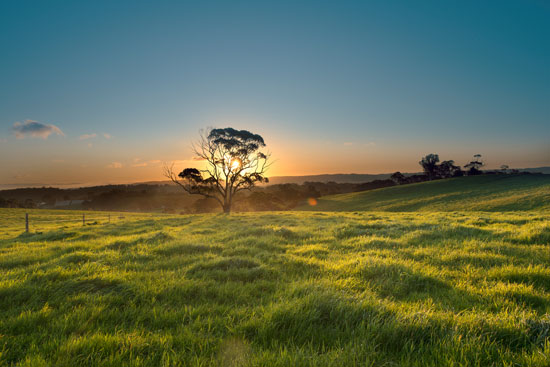Making smarter use of space in the wide, brown land
Deakin newsDid you know that the Australian population increases by one person every minute?
Luckily, Australia is a big country. We have plenty of space; the thing is, we don’t use very much of it.
Department of the Environment figures show that less than 1% of the Australian continent is used for ‘urban intensive uses’ such as residential, business and industrial zones.
Researchers at Deakin University are leading the charge for better strategic planning around sustainable regional development.
Investment in rural industries and improving the liveability of residential areas could lead to much smarter use of the wide, brown land for future generations.
A growing population in a crowded house
The Australian Bureau of Statistics’ nifty population clock shows Australia’s resident population sitting just over 24 million and steadily trending upwards. This is good news for the future of the workforce and promises a bustling economy.
The not-so-good news is that over 88% of this population lives in urban or inner regional areas (for instance, along the coast) and, like any crowded house, we’re starting to get on each other’s nerves.
Housing prices are rising, traffic congestion is wearing us down and the liveability of our cities is at risk of diminishing if we don’t spread out.
At the same time, the population in regional and remote areas is also suffering thanks to a lack of infrastructure and investment.

Over 88% of Australians live in 1% of the country
It’s easy to understand the historical reasons Australians have hugged the coastline.
Australian urban centres were established near trade ports and, over time, cities have offered the greatest number of employment opportunities and better access to resources.
But the need to live in cities to achieve a higher standard of living is no longer as pronounced as it once was.
With technological developments, many jobs can now be performed remotely. Improved transport infrastructure and an increasingly globalised economy mean we are no longer reliant on local suppliers for sustenance.
What’s more, the battle to tackle climate change is forcing us to re-evaluate the ways we use our natural resources, which are consumed most intensively in urban areas.
Despite our knowledge of the problems we face, as a nation we’re not doing much about them.
A lot of urban planning policies continue to be reactive; troubleshooting problems rather than taking a long term view with regional development in mind.
Improving liveability in the regions
So what would it take to encourage more people to live, work and raise their families in Australia’s vast, under-populated regional and remote areas?
Associate Professors Victor Sposito and Robert Faggian, from Deakin University’s Centre for Regional and Rural Futures, believe we need to start with supporting sustainable development of agricultural industries, which includes forestry and bio-energy.
These are potential growth fields, already at home in remote areas, that might balance some of the decreases we’re seeing in farming and other primary industries.
Key areas of development and investment also need to include access to technology, effective local and national transport, and quality education, training and skills development opportunities.
According to Associate Professors Sposito and Faggian, some of this will be best achieved by devolving power from the state level to local authorities, who can bring their exceptional understanding of local environments to the table.
How can we make smarter use of our space?
Associate Professors Sposito and Faggian champion a holistic approach to policy development and stresses the need for community discussion in the regions.
Consultation with the wide range of stakeholders whose lives will be affected by population change is essential, from existing regional communities through to potential investors in these areas.
Any long term strategy must also consider the distinct biophysical features of Australia’s regions, such as soil quality, eco-diversity, and weather patterns.
In fact, Associate Professor Sposito says that Australia’s battle with climate change will have to be substantially fought and won in the regions, ‘because it is there that the major impacts on ecosystems and natural resources will occur’.
Australia is on the cusp of major change in this area, with further research, collaboration and lobbying set to be a priority on the national agenda going forward.
Consequently, sustainable regional development will also be a growth area for Australian universities in the coming years, as we prepare ourselves for population increases, resource management and the effects of climate change.
Deakin is proud to be leading the way across a range of courses and research projects in the School of Life and Environmental Sciences, including a Graduate Certificate, Graduate Diploma and Master of Science specialising in sustainable regional development.
Find out more about the innovative research solutions that Deakin’s Centre for Regional and Rural Futures offers.
Share this story

Key Fact
Housing prices are rising, traffic congestion is wearing us down and the liveability of our cities is at risk of diminishing if we don’t spread out.
